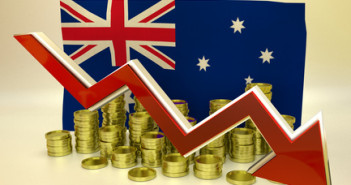The Australian economy took a hit last week as retail sales came in well below expectations fuelling speculation again that the Reserve Bank of Australia will need to lower interest rates in order to kick start the economy.
Retail sales in Australia rose by 0.1% in November lower than analyst’s expectations of a 0.2% rise which was quiet out of the ordinary considering the timing in the run up to Christmas and the New Year period, where shoppers usually don’t shy away from spending.
One of the factors that may be playing on consumers’ minds is the unemployment rate in Australia which seems to be growing month by month.
Guest Post by Andrew Masters from FiboGroup
The Jobless rate in Australia now stands at 6.3%, its highest level in 12 years, and with further rises expected in the nearest future Australian consumers may be saving their money for a rainy day over fear of losing their jobs.
Another problem may be the falling Australian dollar which has dropped from US93.00 cents in September to US82.00 cents at close of trade on Friday, representing a drop of around 15%.
Most popular goods in Australia are imported, and with the local currency in free fall and foreign products becoming more expensive, the Aussie consumer is feeling the pressure.
Some analysts believe there may be light at the end of the tunnel because of lower oil prices with cheaper petrol putting more money in the pockets of consumers as we enter the New Year, which may offset some of the fears of unemployment.
With wages not growing as fast in Australia as many would like, some analysts believe this will weigh on the economy including JPMorgan senior economist Ben Jarman who noted,
“We still see the consumer hamstrung by soft income growth, which limits some of the benefits to retail spending from lower fuel prices.”
“Reporting for Boxing Day and New Year sales has been much firmer, and we see falling oil as a clear support for disposable income and discretionary spending near term, though households still are swimming against the tide of softer income growth and weak sentiment,”
“For that reason, we expect consumer spending to remain subdued early in 2015, at least relative to the tailwind that lower oil prices are providing to household budgets.”
A damming report from Morgan Stanley predicts that the Australian economy this year will grow at its slowest pace since 2009.
Among one of their most pessimistic predictions is the Australian dollar, which they expect to fall to US76.00 cents this year.
Some of their other predictions are listed below,
- Australia’s unemployment rate – currently 6.3 per cent – will rise to 6.8 per cent, with Victoria and Queensland the hardest hit of the major states;
- Banks stocks are overvalued and will underperform partly because of more onerous capital requirements for banks after the Murray report.
- Australian inflation, currently at 2.3 per cent, will dip to 1.8 per cent midyear before rising back up to 2.2 per cent;
- The official cash rate, currently at 2.5 percent, will stay at that level throughout 2015;
- The US Federal Reserve will not begin lifting rates until January 2016.
- Sydney house prices will continue to soar but Melbourne’s will moderate.
